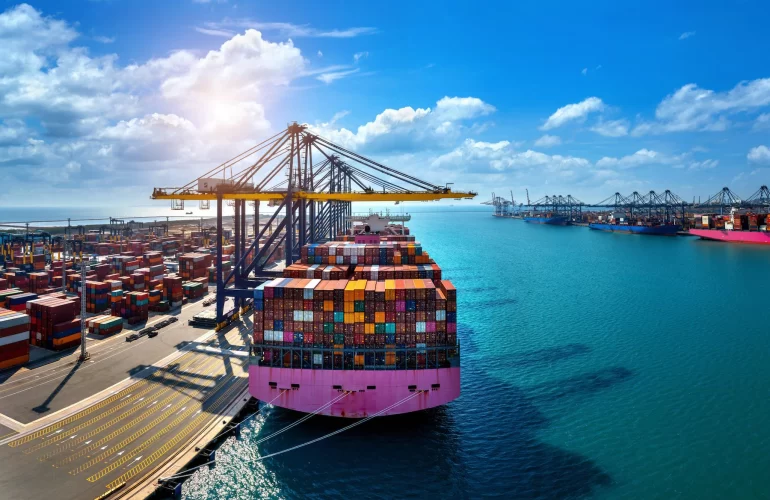Switching ashore after a sea career-Have it in you?
The day we have to leave our family behind, to join the ship, we are come over with an odd feeling and ask ourselves, why can’t I just stay home and do something ashore.
This is one of the main reasons, after few years of sailing, seafarers contemplate switching ashore. However, this is easier said than done.
In this article, we try to enumerate few considerations where seafarers falter when making the transition. We are sure this would give you an insight into the transition and better preparation for the switch.
The thought process-How badly do you want to shift ashore?Is the question one needs to ask themselves, when the thought of shifting ashore crosses his/her mind. Every year there are many seafarers who quit sailing and join a shore organization; however, some part of the lot always moves back to see after a year two. The most important milestone is the DECISION to switch ashore come what may. The shore organizations are very skeptical in taking seafarers for the 1st job ashore as they feel seafarers are the “most confused lot” not knowing whether they really want to shift ashore.
Family angle: Family is the biggest PAP (project affect party) in the process of your switch ashore. The decision to switch has to be run through the family and the family has to be convinced that the switch is for the general good in the long run. Families usually always are very happy to learn of the switch; however, they also need to brace for the changes which would be part of the switch. The changes could be a) managing household expenses, b) change of schools for kids c) moving to a different city for the shore profession etc.
The Run-up: Once you have taken the decision to shift ashore, you need to have a decent length of run-up for mental preparation, which could be up to a couple of contracts. You could read as much literature on switching ashore as available, talk to superintendents, pilots, surveyors, cargo supervisors, coming on board and also friends, batchmates etc. who have already made the switch to better understand the process which will also assist in firming up your decision.
What do you want to do? By the time you have completed the above point, you should be having a fairly good idea of what you plan to do once you switch ashore.it is true that seafarers have a plethora of options available to shift ashore however choosing the one thing which you are interested in doing OR more importantly suited to, will go a long way in you not being in the lot who go back to sea after a couple of years.
Finances-in control? Once you have decided on what you would be doing ashore, you would need to plan your finances accordingly. Meaning-you would need a buffer to see you and your family through the year or two while you are settling in. By this time, you would have a fairly good idea of what would be your remuneration once you shift ashore based on the line of shore profession you have chosen. This usually will end up in a shock in the system if not planned well and also will be the waypoint for altering course back to sea.
Timeline: All the above points are all-time bound. If you do not have the timeline factored in each of the above points, it will be very difficult to assess the time when you would be ready to call it quits. For e.g. You will need to have a firm timeline to have the finances in place, which will help in disciplining your expenditures.
Courses/training to switch ashore: This would be part of your point 4 above and would depend on the shore job chosen. Without completing point 4, doing some course which is available, will be only a waste of your time and money.80% of shore jobs available do not require any training other than the vast experience one has gained at sea.
Action plan: Once you have covered up to point 7, you now need to have a firm WRITTEN down an action plan based on the timeline in point 6. Writing the plan down with the associated timeline is very important as it may bring out some missed tasks and also sharing the same with the family will help them understand your actions better. Preparing a concise CV portraying why the employer has to employ you over other similarly qualified seafarer should also be an important part of the action plan
The approach: Having said that there is no special training required for the majority of jobs ashore, it is because you would be joining ashore as a trainee (even though your designation may be fascinating) to learn, on the job. Shore job brings a very different perspective on the industry which you felt “you knew it all”. Hence one should approach the shore job as a new beginning with a lot of learning opportunities along the way.
Hang up your boots for good: Last but not the least, once you have shifted ashore and started working, you have already crossed the PONR (point of no return) unless you have a force majeure situation, where you may have to divert to a port of refuge. If you have followed the above steps diligently, we do not see any reason you would need to go back to sea.
Summary:
Switching ashore for seafarers has always been the toughest decisions of their life however if due diligence is done, the decision could be very enriching and fulfilling for the seafarer and his family in the long run.
Note: This article in no way undermines the wonderful career at sea, which in itself is so rewarding. As the saying goes, once a seafarer is always a seafarer and this article is trying to portray only a different facet of the exceptional profession.
Author: Capt. Vijayraghavan, Manning Manager, Nippon India Ship Management Pvt Ltd.




